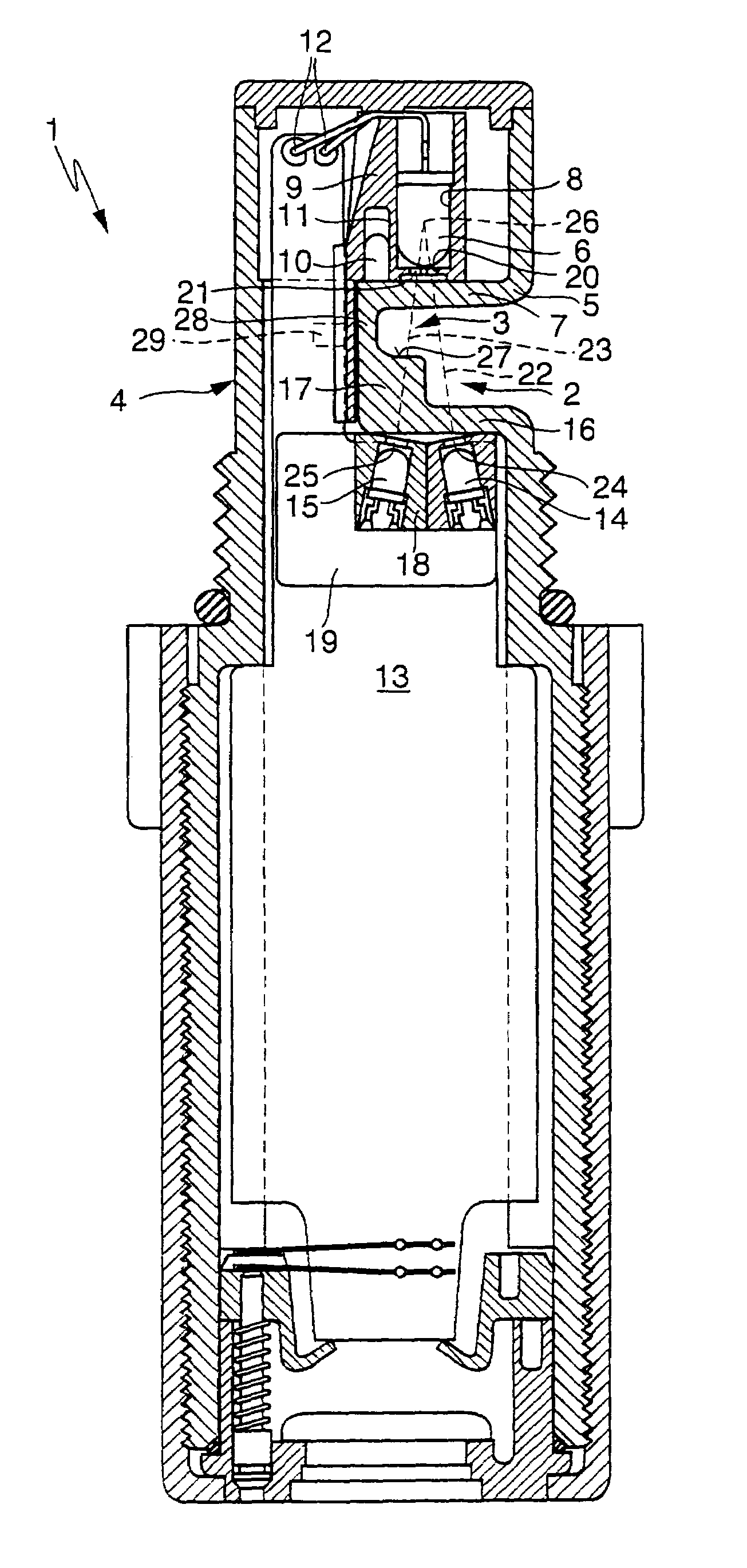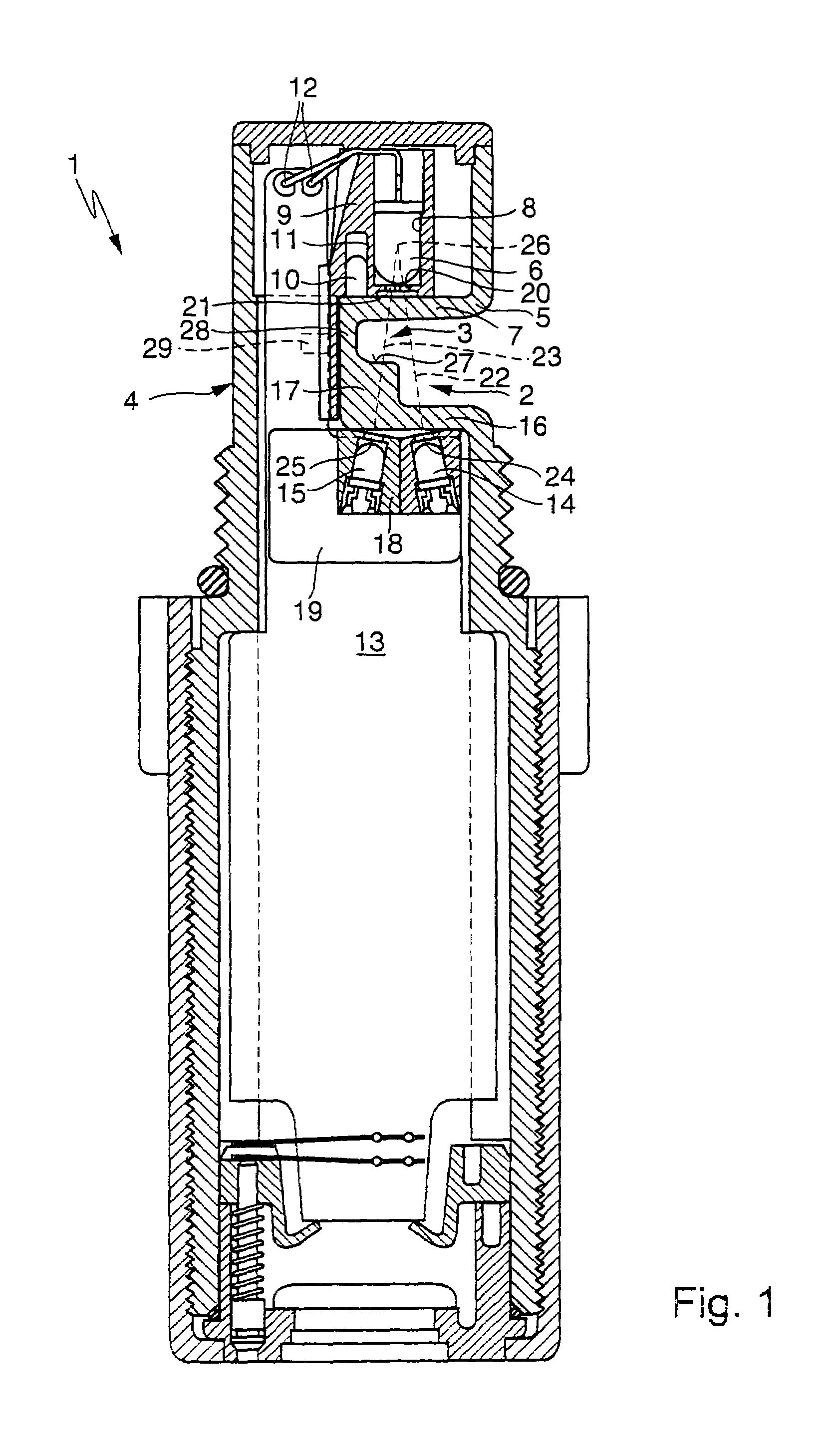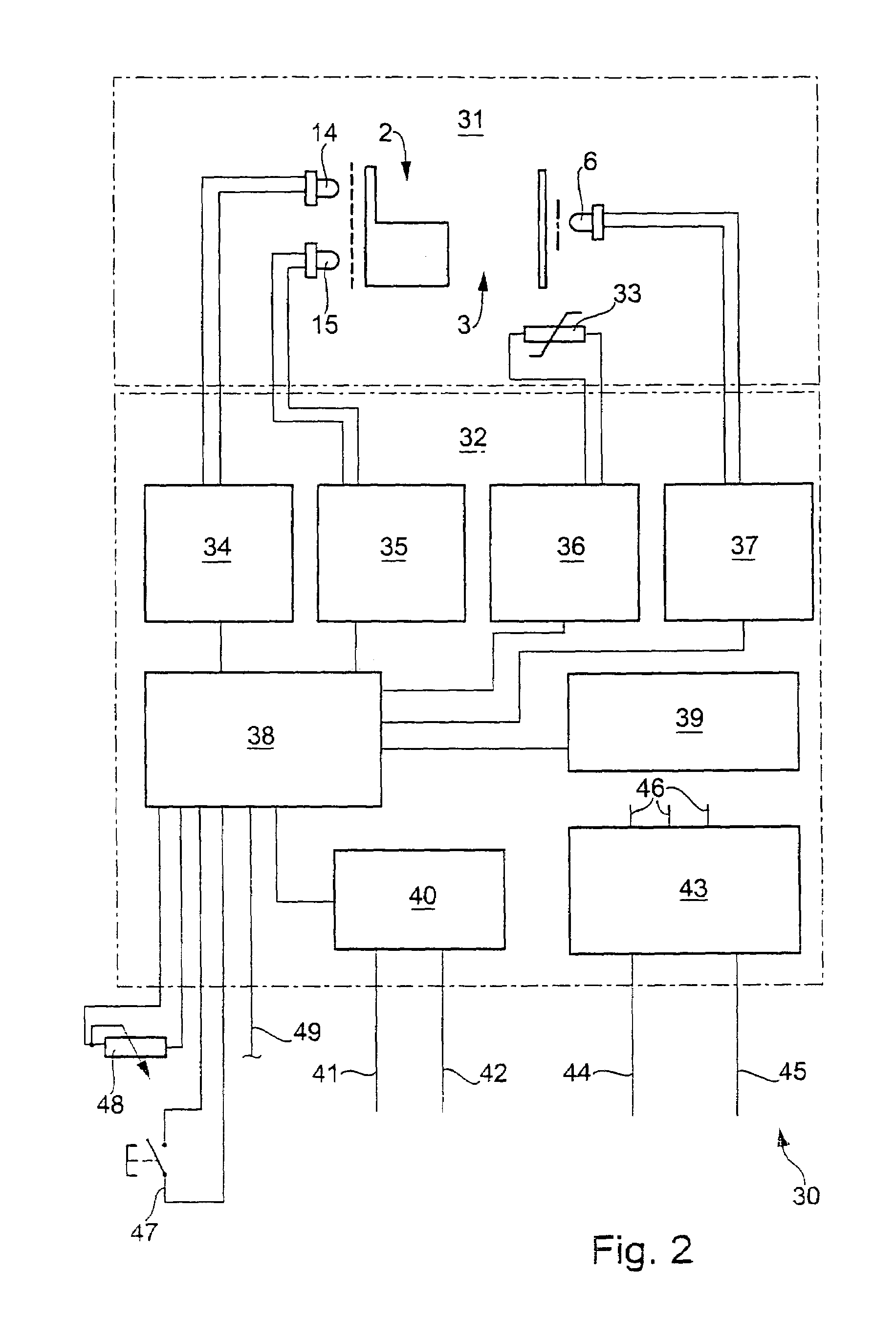Transmission sensor
a technology of transmission sensor and sensor body, which is applied in the direction of optical radiation measurement, instruments, and investigating moving fluids/granular solids, etc., can solve the problems of low water content, affecting the stability of oil, and affecting the quality of oil, so as to achieve the effect of easy automation, large scattering, and relatively easy and inexpensive mass production
- Summary
- Abstract
- Description
- Claims
- Application Information
AI Technical Summary
Benefits of technology
Problems solved by technology
Method used
Image
Examples
Embodiment Construction
[0031]According to FIG. 1 an inventive transmission sensor 1 has a longer first measurement zone 2 and a shorter second measurement zone 3. During operation of the transmission sensor 1, the two measurement zones 2 and 3 are filled by a fluid (not shown here), e.g., a liquid or a gas which is to be monitored for impurities. The transmission sensor 1 has a housing 4, which has at least one wall 5 that is transparent for electromagnetic radiation, at least in the area of the measurement zones 2 and 3. This housing 4 is preferably manufactured as an injection molded part made of plastic.
[0032]A transmitter 6, e.g., in the form of a semiconductor element, is provided in the housing 4 close to an inlet area 7 in the wall 5. This transmitter 6 is capable of emitting electromagnetic radiation through the inlet area 7 into the measurement zones 2 and 3. The preferred electromagnetic radiation here is light, in particular infrared light. The transmitter 6 is mounted in a transmitter carrier ...
PUM
| Property | Measurement | Unit |
|---|---|---|
| temperature | aaaaa | aaaaa |
| current | aaaaa | aaaaa |
| turbidity | aaaaa | aaaaa |
Abstract
Description
Claims
Application Information
 Login to View More
Login to View More - R&D
- Intellectual Property
- Life Sciences
- Materials
- Tech Scout
- Unparalleled Data Quality
- Higher Quality Content
- 60% Fewer Hallucinations
Browse by: Latest US Patents, China's latest patents, Technical Efficacy Thesaurus, Application Domain, Technology Topic, Popular Technical Reports.
© 2025 PatSnap. All rights reserved.Legal|Privacy policy|Modern Slavery Act Transparency Statement|Sitemap|About US| Contact US: help@patsnap.com



